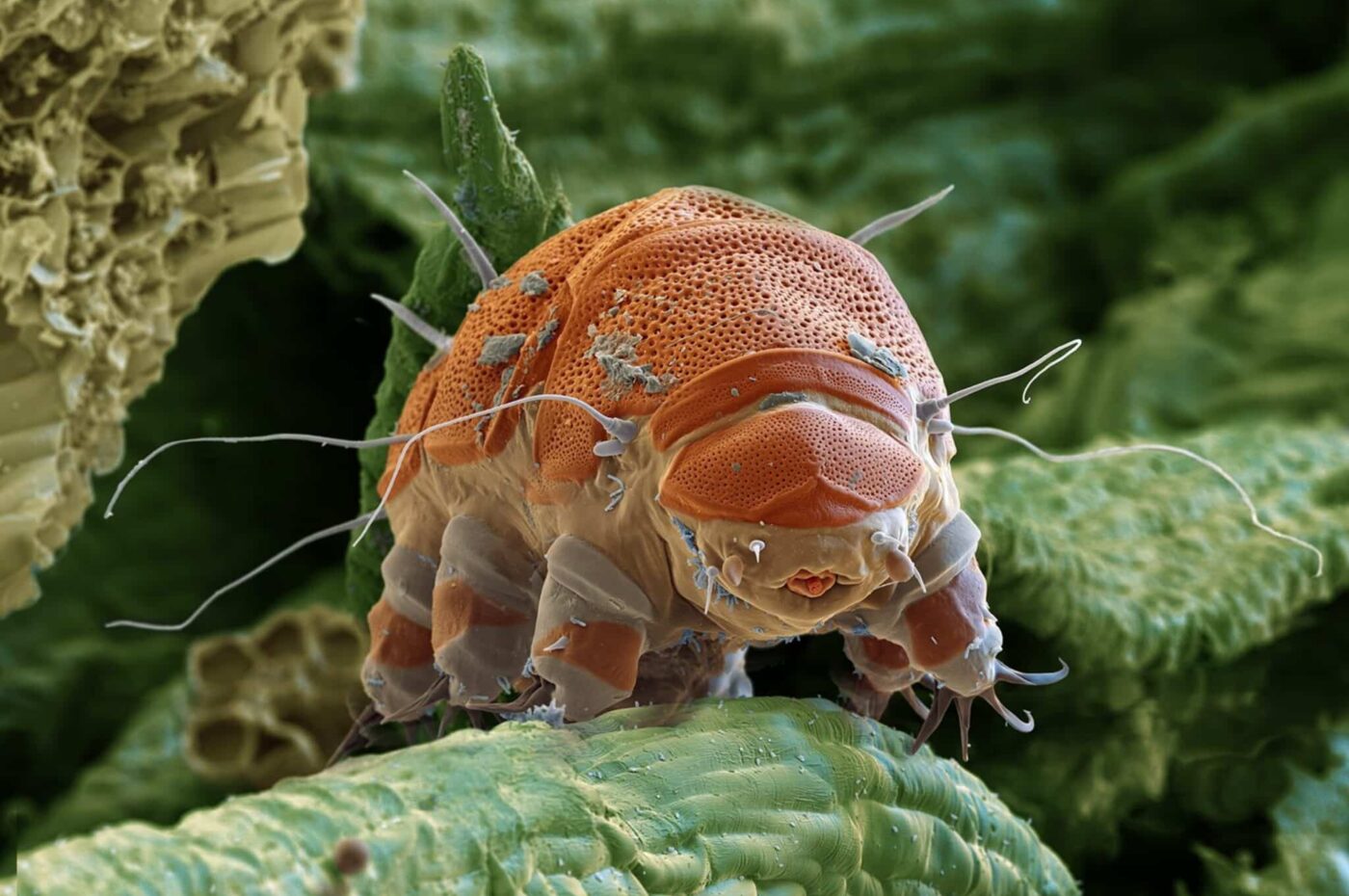 Shutterstock
Shutterstock
Insects are among the oldest creatures on Earth, with some species remaining virtually unchanged for millions of years. While many species have evolved to adapt to their environments, others have proven that their ancient designs are simply too effective to improve upon. These “living fossils” have survived some of the most dramatic shifts in Earth’s history. Their remarkable ability to thrive in ever-changing conditions without altering their core structure makes them fascinating examples of evolutionary success and a testament to nature’s resilience.
Dragonflies
 Shutterstock
Shutterstock
Dragonflies have existed for more than 300 million years, making them one of the oldest insect species in the world. While today’s dragonflies are much smaller than their ancient ancestors, the fundamental structure of their body and wings has remained largely unchanged. The dragonfly’s wings are capable of independent movement, allowing them to hover and fly with incredible precision. Their sophisticated hunting technique, which involves catching prey mid-air, has been incredibly successful, showcasing that their evolutionary design has stood the test of time.
Cockroaches
 Shutterstock
Shutterstock
Cockroaches are one of the most successful insect species, surviving for more than 350 million years. Despite their reputation as pests, cockroaches have a highly effective design that has allowed them to thrive in nearly every environment. Their flat, oval-shaped bodies and long antennae make them highly adaptable and capable of hiding in tight spaces. Cockroaches are remarkably resilient and have survived several mass extinctions. Their ability to withstand extreme temperatures, lack of food, and exposure to radiation proves that their ancient design is still highly efficient.
Termites
 Shutterstock
Shutterstock
Termites have been around for about 250 million years, and their basic structure has remained remarkably unchanged. These social insects live in large colonies with distinct roles, including workers, soldiers, and queens. Their ability to digest cellulose from wood has allowed them to feed on and break down organic matter, playing a crucial role in nutrient recycling. Despite some modern adaptations, like resistance to pesticides, their fundamental biology and social systems have not altered significantly, allowing them to remain one of the most successful groups of insects.
Praying Mantises
 Shutterstock
Shutterstock
Praying mantises have been around for over 200 million years, and their basic physical structure and predatory behavior have changed very little. Their distinctive triangular heads and raptorial forelegs make them exceptional ambush predators. Mantises are known for their ability to rotate their heads and track prey with precision. This hunting strategy, which involves lying in wait and striking with lightning-fast speed, has been highly effective for millions of years, allowing mantises to continue thriving in diverse ecosystems without significant evolutionary changes.
Ticks
 Shutterstock
Shutterstock
Ticks are another ancient species, with a lineage stretching back more than 300 million years. These parasitic creatures have specialized mouthparts that allow them to latch onto hosts and feed on their blood. Ticks have adapted to a wide range of environments, from dense forests to urban areas, but their general structure and parasitic behavior have remained largely the same. Their ability to survive by feeding on a variety of hosts has helped them endure multiple extinction events, proving that their evolutionary strategy has remained effective over time.
Horseflies
 Shutterstock
Shutterstock
Horseflies are another ancient species that have managed to survive for over 200 million years without significant changes to their physical structure or behavior. These aggressive blood-feeding insects have large, powerful jaws that enable them to bite through the skin of mammals. Their strong wings allow them to fly long distances in search of a host, and they are adept at sensing heat and carbon dioxide, which helps them find potential prey. While some aspects of their behavior have adapted to changing environments, their basic feeding and hunting strategies have remained largely unchanged.
Water Bears (Tardigrades)
 Shutterstock
Shutterstock
Tardigrades, also known as water bears, are microscopic organisms that have existed for over 500 million years. While not technically insects, tardigrades are one of the most resilient creatures on Earth, capable of surviving extreme conditions such as high radiation, intense heat, and even the vacuum of space. Tardigrades can enter a state known as cryptobiosis, where they effectively shut down their metabolic functions and endure harsh environments. Their ability to survive in such extreme conditions without altering their basic form makes them a fascinating example of evolutionary stability.
Mayflies
 Shutterstock1200
Shutterstock1200
Mayflies are one of the oldest insect species, with a lineage that dates back more than 350 million years. Their life cycle, which consists of aquatic larvae and short-lived adults, has remained remarkably unchanged over time. The adult mayflies typically live for just a few hours or days, but their larvae play a critical role in freshwater ecosystems by feeding on organic matter and serving as a food source for other aquatic creatures. Despite environmental changes over millions of years, mayflies have maintained their simple yet effective life cycle, allowing them to thrive in aquatic habitats.
Ants
 Shutterstock
Shutterstock
Ants are a highly successful and ancient insect group, having existed for over 100 million years. Their social organization, which divides labor between workers, soldiers, and queens, has allowed ants to dominate ecosystems across the globe. The basic structure of ants, including their large mandibles, powerful legs, and sophisticated communication methods, has remained remarkably consistent. While ants have adapted to different environments, their cooperative behavior and complex social structures have proven to be a highly effective evolutionary strategy that has helped them thrive for millions of years.
Lacewings
 Shutterstock
Shutterstock
Lacewings have been around for more than 150 million years, and their delicate, transparent wings and predatory behavior have remained largely unchanged. These insects are known for their voracious appetite for aphids and other pests, making them beneficial to ecosystems and agriculture. Lacewings have adapted slightly over time to various environmental pressures, but their basic body structure and hunting behavior have stayed the same. Their role in controlling pest populations and their beautiful, lace-like wings have helped them remain one of the most well-preserved insect species, continuing their ancient role as natural pest controllers.
Silverfish
 Shutterstock
Shutterstock
Silverfish are ancient insects that have existed for over 400 million years, making them one of the oldest living insect species. Their long, silvery bodies and distinct, fish-like movements give them their name. These nocturnal creatures thrive in dark, humid environments, such as basements and bathrooms, and feed on organic matter like paper, glue, and starches. Their primitive body structure and feeding habits have remained remarkably stable over time. Silverfish are well-adapted to living in various environments, and their ability to survive without significant evolutionary change is a testament to their resilience.
The Insects That Refuse To Evolve
 Shutterstock
Shutterstock
Some insects have truly cracked the evolutionary code: if it ain’t broke, don’t fix it! These ancient species have thrived for millions of years in ever-changing environments, yet their designs remain almost unchanged. Their survival tactics have been perfected, and they’ve proven that sometimes, the old ways are simply the best. So, the next time you come across one of these ancient creatures, remember—they’ve been doing their thing far longer than humans have been around, and they’re showing no signs of slowing down anytime soon!
 Toledo, United States.
Toledo, United States.
